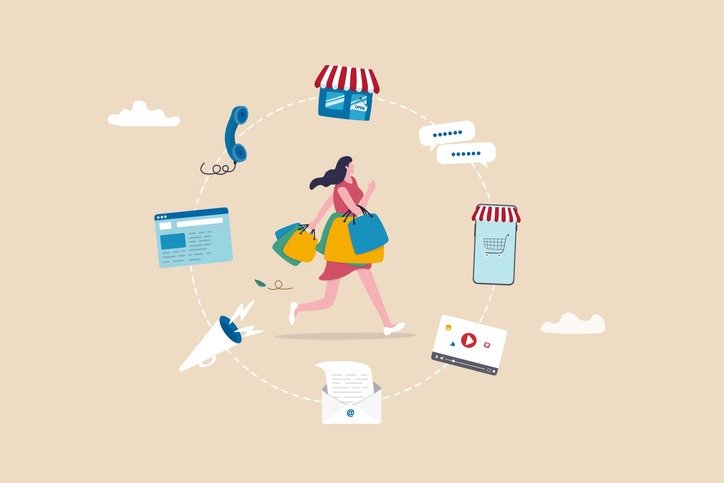
As a B2B business owner, you understand the importance of effective marketing and sales strategies to attract and convert potential customers – here’s how to yield sales collateral to drive customer engagement and boost retention
CREDIT: This is an edited version of an article that originally appeared on Ron Sela
Sales collateral represents a potent tool that holds a pivotal role in these processes, serving as a valuable asset to educate and persuade potential clients. It forms the backbone of communication with prospects throughout their buyer’s journey, guiding them towards making well-informed purchasing decisions.
At its core, sales collateral delivers comprehensive insights into your company’s products, services, and exceptional customer experience. It offers tangible evidence of your assertions and effectively illustrates key points or elucidates intricate concepts. By presenting this information in a compelling manner, your sales collateral aids potential customers in comprehending how your B2B products or services can address their specific challenges or fulfil their distinctive requirements.
Beyond immediate sales, sales collateral also assumes the role of a strategic asset for long-term customer engagement and retention. It serves as a lead nurturing tool, especially for potential clients who are not yet prepared to make a purchase. By continuously delivering value through your sales collateral, you keep your B2B business at the forefront of clients’ minds, foster trust, and establish credibility, nurturing prospects until they are ready to transform into steadfast customers.
The spectrum of sales collateral in the B2B realm is diverse and continually evolving alongside technological advancements. Traditional printed materials such as brochures, case studies, business cards, catalogues, and flyers remain indispensable tools. However, digital assets like e-books, presentations, product demonstration videos, or webinars are progressively gaining traction among tech-savvy B2B audiences. Moreover, online resources including blogs, whitepapers, landing pages, and interactive content play a pivotal role in reaching and engaging potential B2B customers.
Within the B2B context, sales collateral functions as a roadmap, steering prospects from the awareness stage – where they initially discover your B2B offerings – through the consideration stage, where they actively explore and compare various solutions, to the decision stage, where they conclude their purchase decision. At each juncture, the role of sales collateral is to furnish pertinent information at the appropriate time, guiding prospects towards a purchase and ensuring clients remain satisfied and engaged with your B2B brand.
The awareness stage
In this stage, sales collateral assumes a critical role in seizing the attention of potential clients and laying the foundation for future interaction. Informative and captivating content like blog posts, social media content, and educational videos aid in introducing your B2B brand and offering valuable insights to help potential clients comprehend their challenges and contemplate possible solutions.
The consideration stage
During the consideration stage, when prospects are actively researching and comparing different solutions, your sales collateral aims to underscore the advantages and unique selling points of your B2B offerings over competitors. More comprehensive content such as webinars, case studies, and whitepapers becomes exceedingly valuable at this stage, showcasing your B2B company’s expertise and presenting social proof of your product’s effectiveness.
The decision stage
In this stage, when prospective clients have narrowed down their choices, the role of your sales collateral shifts towards nudging them to opt for your B2B offering. Providing compelling reasons to choose your products or services over competitors is paramount at this stage. Datasheets, pricing guides, and detailed product specifications can prove immensely valuable, equipping clients with the information required to finalise their decision in your favour.
Advocacy stage
In the advocacy stage, subsequent to making the purchase, the function of sales collateral transitions from selling to nurturing relationships, encouraging brand loyalty, and transforming clients into advocates for your B2B brand. Regular communication through newsletters, user guides, and post-purchase follow-up emails assumes vital significance in maintaining robust relationships with B2B clients and encouraging them to share positive experiences with others.
Producing captivating sales collateral for your B2B business necessitates meticulous planning and execution. It is imperative to align the content with your B2B brand’s identity and value proposition. Maintaining content clarity and simplicity ensures resonance with your target audience of potential B2B clients.
Investing in design enhances the impact of the collateral and reinforces your B2B brand’s professionalism and commitment to quality. Harnessing technology, such as content management systems, CRM systems, and marketing automation tools, streamlines the distribution process and ensures that the appropriate sales collateral reaches the suitable audience at the right juncture.
For wide-ranging reach and engagement with B2B clients, your business must leverage multiple channels for disseminating sales collateral. This may encompass digital platforms like email marketing and social media, targeted direct mail campaigns aimed at local B2B prospects, participation in B2B-focused trade shows and conferences, and personalised sales meetings for face-to-face interactions.



Be the first to comment